Text
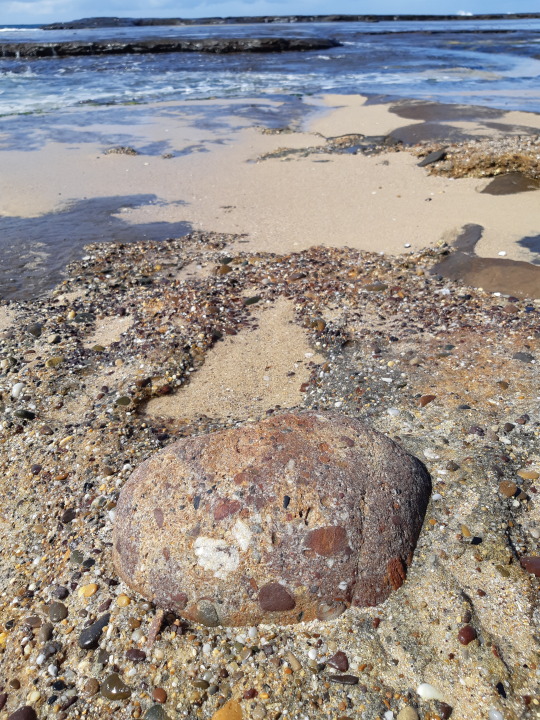
Compounded time in nature
One of my favourite geological features are rocks within rocks like the one in the picture. For me they beautifully encapsulate passage of time at scale that is not comprehensible by human beings.
This boulder is at least 200 million years old and yet it contains other rocks that must have formed before it. So, the cumulative time encapsulated by this simple boulder is much greater than what already is vast antiquity.
Southcoast NSW, Australia.
#science#studyblr#earth science#natural history#nature#time#antiquity#ancient#history#geology#geography#beauitful#student#drrock
136 notes
·
View notes
Note
What advice would you give to someone who really wants to be a geologist but also has another career option that they really want to do?
Thanks for your question.
If you have an opportunity to give geology studies a go, try to do that. Working as a geologist may require you to be in remote places for long time, camp, work long days outdoors during different seasons and in different environments. If you do decide to do that, aim for courses that involve a lot of field trips, it will give some impression what is involved in such work, and its fun! Career in geology also requires a lot of computer and laboratory work. So it can be quite a varied career, ranging from wild adventures and hard labor to tedious work in the office or laboratory. It often sounds amazing but sometimes it can be difficult to know if you really into that stuff until you give it a proper try.
Depending on your life commitments it may be very interesting and rewarding experience or torture if you not into this sort of stuff. Weight benefits of both career opportunities against each other and give the chosen one a go. You always have power to change.
From personal experience, I have not looked back since committing to geology, it has been very interesting job and I do not get bored of it!
Good luck.
36 notes
·
View notes
Photo

Frog Rock
The frog rock is a granite boulder which was fractured and weathered by natural processes that made it develop a shape that resembles a crouching frog. This is an example of pareidolia, which is a human tendency of seeing shapes of animals, human faces etc. in inanimate objects.
Mudgee, NSW, Australia
#frog#rock#granite#geology#pareidolia#landscape#erosion#weathering#studyblr#natural art#natural history#science#biology#geography#rock formation#original content#drrock
110 notes
·
View notes
Note
Hello ! Has someone already asked you about your most hated rock ? The rock that annoys you the most ? The harder rock(s) to study ? Have a great day !
Hi! Actually, not until now. I do not have a ‘hated rock’, as in every rock an interesting story can be found. But if I had to pick one, I think it would be a marble.
Marble is a metamorphic rock which originally was a limestone (a sedimentary rock made up of fossils of ancient sea creatures) that was transformed/recrystallised by intense heat and pressure. Because of this metamorphic transformation, fossils in limestone rock are often destroyed and much of the rock’s earlier history is erased. But of course, that’s not to say that there is nothing that can be done with it!
Thanks for your question! Dr Rock.
#marble#question#rock#science#metamorphism#limestone#ancient#fossils#geology#student#studyblr#drrock
61 notes
·
View notes
Photo

Many shapes of fossils (Part 2)
Marine sedimentary rocks are the most common along southern New South Wales coast of Australia. These contain many marine shell fossils in sandstones and siltstones that represent a shallow to deep sea environments from around 250 million years ago.
These creatures would have fed on the organic-rich debris found within the sediment that now surrounds them, and which after many millions of years have turned into a hard rock.




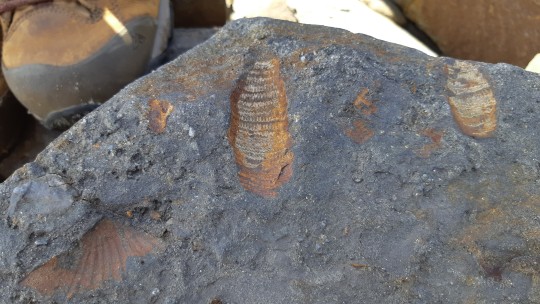
#geology#fossils#paleontology#science#seashells#ancient life#natural history#studyblr#natures beauty#original content#biology#sedimentology#sea#student#drrock
104 notes
·
View notes
Photo

Many shades of fossils
Fossils are incredible remnants of an ancient world. They can be billions, millions, thousands etc. years old and their antiquity has always intrigued humankind.
Sometimes fossils can be very easily spotted in rocks because their telling shape stands out in a rock, but sometimes it may not be so easy and one has to know what to look out for.
In this post I present an array of marine shell fossils in sandstones and siltstones that represent shallow to deep sea environments from around 250 million years ago. I hope these can help you learn what to look out for and so you too can spot fossils in your local rocks.
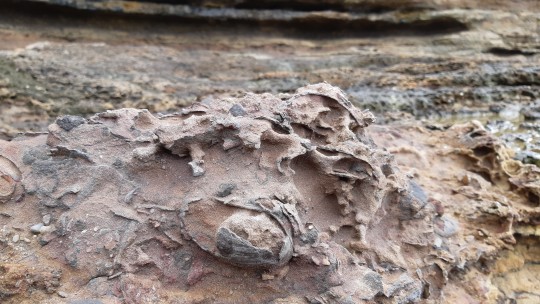

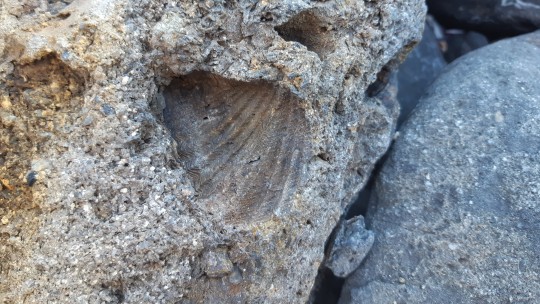


#fossils#geology#science#paleontology#ancient life#natural history#seashells#shells#natures beauty#studyblr#student#wonder#original photography#original content#nature#ancient#sea#exploring#drrock
118 notes
·
View notes
Note
Is it true that geologists can only see rocks and minerals?
Hmm. That's one way to put it, but this would mean that geologists are blind to many other aspects of their job, so the answer is no.
However, geologists look at the rocks and landscapes in a different way than most people see them. Different rock types and their contact with rocks around them tells geologist rich story about the past. Some rocks are formed by rivers, other by ocean waves, other under extreme pressure and temperature conditions etc. If one studies each rock in isolation and then puts all the pieces of the puzzle together, a geological past can be deciphered. Same is for the landscapes, different rocks break down in different ways and certain landforms can be linked to specific processes of erosion. So, geologist not only sees pretty landscapes but also the processes that led to their formation.
Here is a photo of valley eroded into granite rocks that once formed the hearth of a volcano chain.
Best wishes! Dr Rock

14 notes
·
View notes
Photo

Wild estuary coast
This a spectacular and wild coast of western Kimberley in Western Australia.
This region experiences world’s second largest tidal change between low and high tide which can reach approximately 11 metres (36 feet) during extreme events. Such high tidal variation means large land surface of the Kimberley’s coast is constantly flooded, and therefore, results in extensive mud flats shown above.
This flat land is predominantly built up by clays and silts that are brought by rivers from inland of the continent. These are typically laid out as soft layers of sediment which in places can develop hardened salt crusts (white patches on the photo) that cannot be easily walked on. This landscape is largely considered impenetrable for humans and is very dangerous as it is a home to saltwater crocodiles.
#coast#geology#australia#tide#mud#clay#landscape#science#geography#original photography#wild#wilderness#nature#studyblr#student#biology#original content#drrock
11 notes
·
View notes
Note
Are pudding stones JUST conglomerates with a drastic difference in the xenoliths and matrix or are they also metamorphosed? I own 2 pudding stones from Michigan as well as a few regular conglomerates but my geology professor didn't explain pudding stones well, here's a photo of them1

Hi abirdsfreedom,
That is a nice collection! You are correct in your definition of puddingstone, however conglomerate does not need to be metamorphosed to be described as puddingstone.
Below I provide you with definition quote for puddingstone from the Glossary of Geology (5th edition, 2011) with hope that it helps with further explanation of this rock:
‘(a) A popular name applied chiefly in Great Britain to a conglomerate consisting of well-rounded pebbles whose colours are in such marked contrast with the abundant fine-grained matrix or cement that the rock suggests an old-fashioned plum pudding. Example: the Hertfordshire Puddingstone (lower Eocene) in England, composed of black or brown flint pebbles cemented by white silica, with or without brown iron hydroxide. Syn: plum-pudding stone. (b) A siliceous rock cut into blocks for furnace linings. Also spelled: pudding stone.‘
Hope this helps! Thanks for your question.
#geology#puddingstone#definition#question#science#studyblr#education#conglomerate#community#rocks#drrock
31 notes
·
View notes
Photo

Ripples from ~ 2-bilion-years ago
These ripples are preserved in this sandstone rock and are now lining a dry creek bed in Australian outback. But, it was around 2 billion years ago when motion of water formed these sand ripples on the bottom of a shallow sea. Note that orientation of ripples is different between sedimentary layers which indicates changes to water current direction.
#ripples#geology#rock#outback#sedimentology#geoscience#natural history#ancient#sea#original content#exploring#landscape#science#studyblr#student#drrock
2K notes
·
View notes
Photo

Cuesta landscape
Cuesta is an asymmetric ridge or a hill, where the angle of its slope on one side is different to the other. The formation of cuestas is controlled by an erosion-resistant layer within stack of rocks. The slope angles are controlled by the tilt of the rock layers and their degree of resistance to erosion.
The aerial photo above was taken from helicopter and shows an example of cuesta ridge dominated landscape where underlying geology of a region controls the shape of the land surface. Here many layers of sedimentary rocks with different degrees of susceptibility to erosion were tilted by tectonic forces and eroded to form present topography.
Kimberley Group, Western Australia
#landscape#cuesta#ridge#geology#geography#topography#nature#natural history#kimberley#aerial photography#original photography#adventure#helicopter#science#environment#Wanderlust#travel#scenery#aesthetic#tumblr radar#studyblr#drrock
44 notes
·
View notes
Photo

Inside 15-million-year-old volcano
Panoramic landscape view of what would have been an inside of a volcano. Volcanoes are very unstable, not only in terms of the volcanism and earthquakes they cause, but also in terms of their structure. They are made up of relatively soft volcanic ashes and cooled hard lava flows, which together, make poor foundations. So as soon as volcanic activity stops, volcano breaks apart and erodes away. The result can be seen here, for approximately last 15 million years this volcano has been eroding away creating this spectacular landscape. The leftover protruding features are the ancient lava flow tubes and chambers, with magma which never made it to the surface, and which slowly cooled to form hard erosion resistant rocks.
Warrumbungle National Park, Australia
#landscape#volcano#photography#natural history#nature#natural#geology#geography#science#studyblr#Aesthetic#Wanderlust#travel#palaeoblr#ancient#relaxing#drrock
110 notes
·
View notes
Photo

Belmore waterfalls
Belmore waterfalls in New South Wales, Australia formed on 250 to 200 million years old sandstone rocks. Formation of such eye-catching cascade is possible due to erosion resistant quartz-rich sandstones in this area.
#geology#waterfall#sandstone#earth science#cascade#erosion#landscape#original photography#science#nature#adventure#drrock
23 notes
·
View notes
Photo

Yes, I indeed spent a lot of my time taking a photo of a boulder…
This boulder is not from in-situ weathering as similar boulders of this size that can be seen in examples around the world. This one rolled to this position from a cliff higher up the creek, and I just adore how well it rests on its bedrock pedestal.
#geology#boulder#gravity#earth science#photography#original photographers#balance#science#geography#pedestal#drrock
46 notes
·
View notes
Photo
For me fossils are time portals. Every time I see one emerging out of a rock, I imagine this thing living in the sediments feeding on organic matter, ruining nicely layered sediments, as if it was alive yesterday....
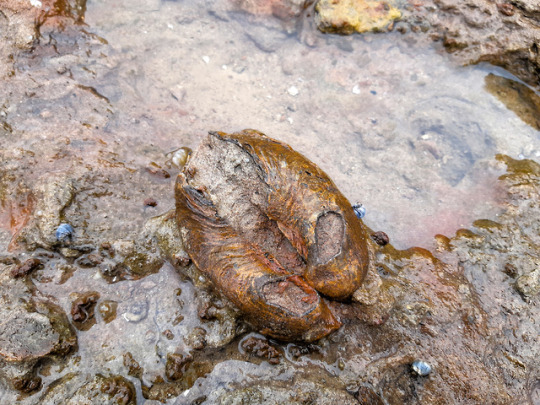
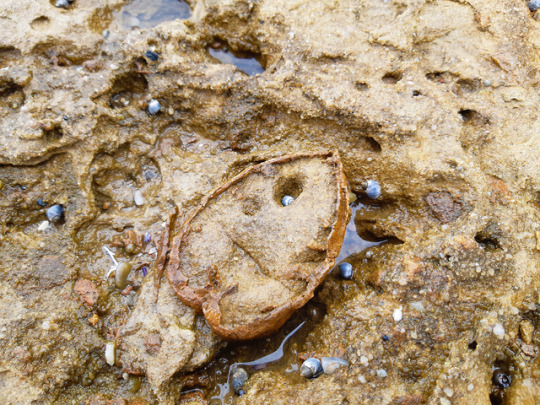
Articulated bivalve fossils
Both shell halves are still closed and intact (articulated), it means that this animal died in this spot exactly (probably buried by a pile of sediment), preserved in its living position. Sedimentary processes or predators have not disturbed it since, and so it has been lying in these sediments for about 250 million years by now.
South Coast, New South Wales, Australia
#geology#fossils#time#time machine#science#earth science#ancient#sedimentology#rocks#photooftheday#biology#paleontology#reblog
241 notes
·
View notes
Photo

Symplectite
Symplectite is a petrographic texture which forms when a mineral is no longer stable and breaks down into two or more different minerals. Here, omphacite is completely replaced by different clinopyroxene and plagioclase creating this worm-like texture in the metamorphic rock called an eclogite.
#reblog#minerals#microscopic#eclogite#geology#omphacite#symplectite#metamorphic#earth science#science#rocks#photooftheday#drrock
133 notes
·
View notes
Photo

Dykes and landscapes
Dykes most frequently occur as igneous rocks which once were liquid magma that intruded older rocks. Dykes form as sub-vertical to vertical linear sheet-like features and can be millimetres to kilometres wide.
Dykes can contribute to formation of interesting landscape features. For example, in above photograph, the dyke was more resistant to weathering and erosion than the rock it intruded, and so, it gave rise to a tall protruding wall known as the Breadknife, the Warrumbungle National Park. Whereas, in the photograph below, the dyke is less resistant to weathering and erosion, and so erosion of the dyke resulted in formation of a slot or a gully in the cliff near Kiama, south coast NSW.
Erosion of surface features (such as rocks) at different rates is referred to as differential erosion.
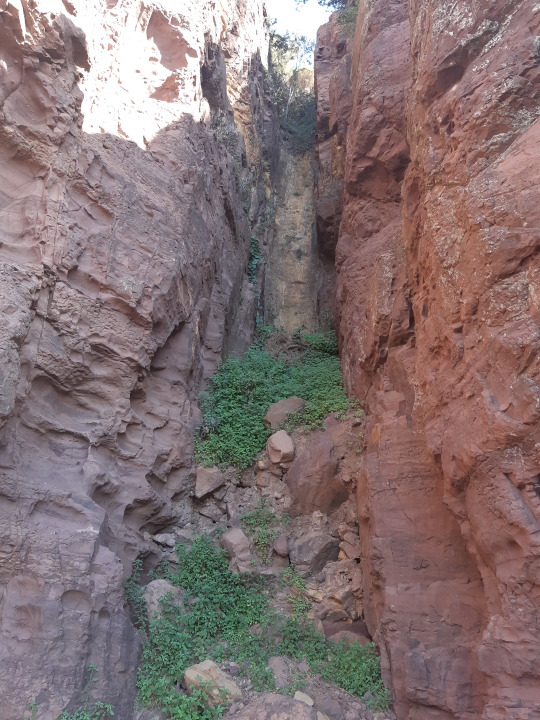
#geology#landscape#dyke#dike#rocks#igneous#erosion#nature#feature#Physical Geography#original photography#geography#science#earth science#warrumbungle#aestethic#trees#natures beauty#mountains#natural history#learning is fun#photooftheday#studyblr#drrock
344 notes
·
View notes